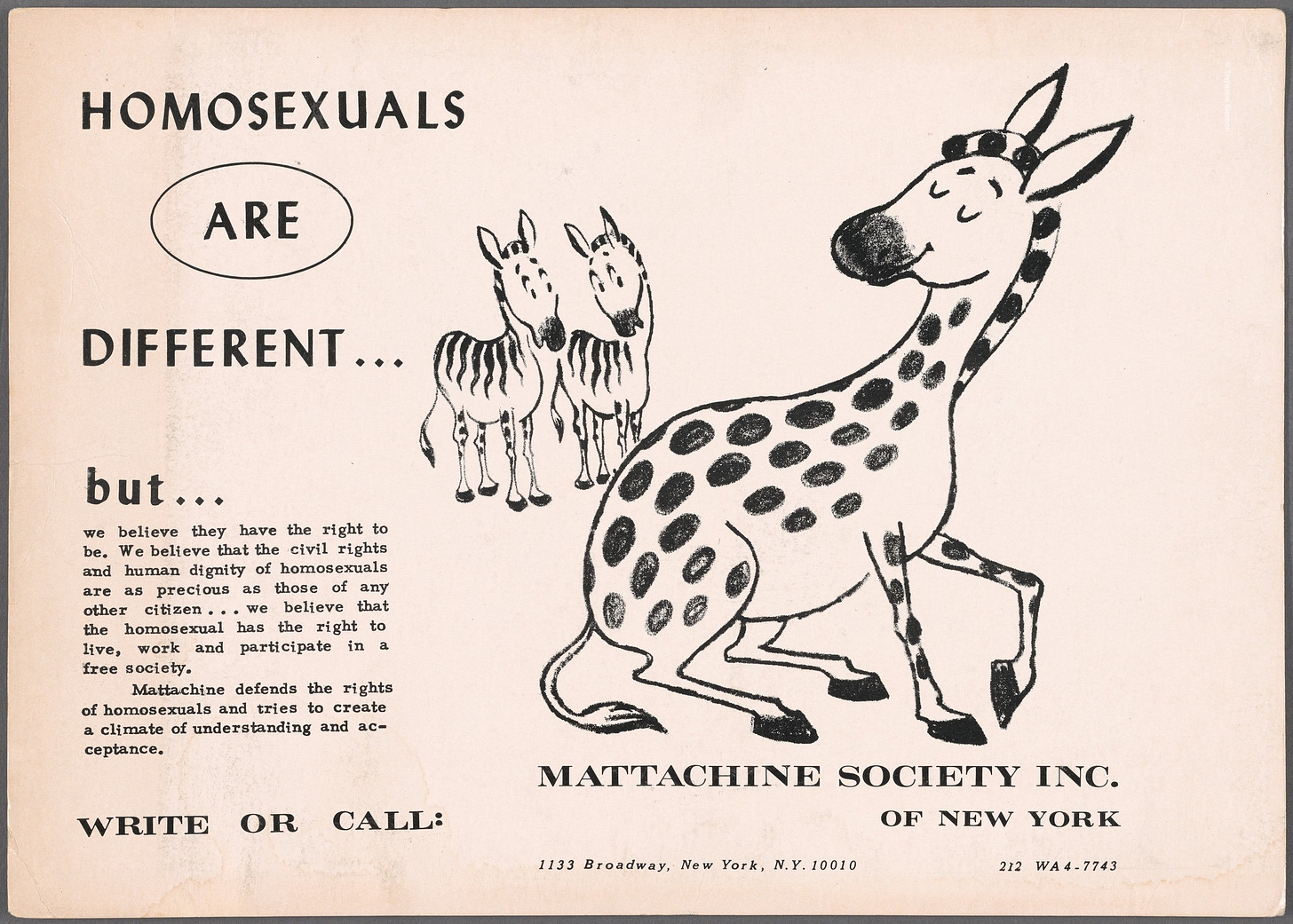Gay Rights Was About Accepting Differences, Trans Rights is About Denying Them
The fundamental conflict between the gay and trans movements
A major reason for the success of the “trans rights” movement has been the efforts of activists to paint the movement as the successor of the fight for gay rights.
To the casual observer, this might seem to be the case but, in reality, the two movements could not stand on two more different philosophical underpinnings.
The fundamental conflict is this: gay rights and the fight for gay acceptance hinged on the idea that same-sex attracted people are different but still worthy of the same rights and respect as everyone else. Trans rights, in particular the right to self-identify as the opposite sex, demands that we completely ignore human differences as stark and basic as physical anatomy.
The above flyer perfectly encapsulates the argument that led to the widespread acceptance of homosexuality that we see today. “Homosexuals are different,” it proclaims, “but…
we believe that they have the right to be. We believe that the civil rights and human dignity of homosexuals are as precious as tho…




